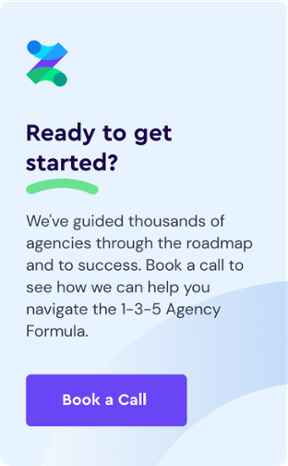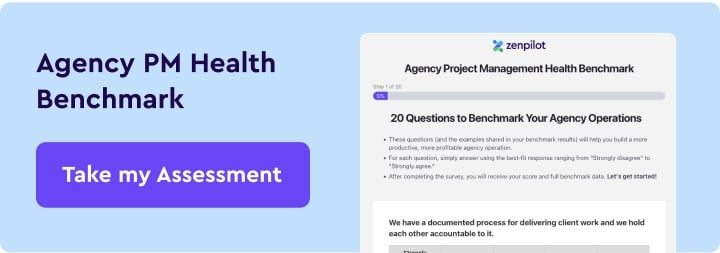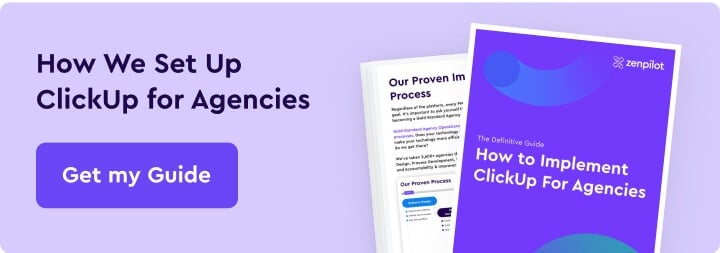3 Meetings Every Inbound Partnership Needs
To chat with Gray and have ZenPilot lead your team through the last project management implementation you'll ever need, schedule a quick call here.
Meetings are essential to every client relationship.
In the beginning, things are lovely. We meet in person. We go out to lunch. We laugh. We get excited and sign the contract.
And then, for a lot of client relationships, our meeting schedule drops off. We’re either setting up meetings to resolve issues or try to get the renewal. But, the truth is, if you’re waiting until one of those two points to pick up the meeting cycle, you’re in big trouble.
Client Fire Prevention is Half the Battle
If you’ve been following along this season, permission to skip over this section since you’ve heard it time and time again.
Most client fires—those conflicts that when left go destroy relationships—can be prevented.
Meetings Are Fire Prevention
Meetings are one of the most valuable fire prevention tools you have. By intentionally adding meetings into your client relationship management, not only will you and your clients be happier, but you’ll be able to snuff out flames before they break into fires.
The Three Client Meetings You Need
There are three types of client meetings you need to add to your relationship management. From where I’m sitting, and from my experience, they’re absolutely necessary. They put you in position to over-communicate and thus to never leave your clients wondering about your work.
These three meeting types are absolutely crucial if you’re running a retainer or high-touch project.
The three types are:
- Weekly
- Monthly
- Quarterly
Meeting 1: Weekly Touch Point Meeting
This is your opportunity to work with your client point of contact.
- It’s important that your client has someone they can make available on a weekly basis for this meeting. The president, although a valuable part of the process, might not always be able to meet weekly. A president should be brought in monthly or quarterly.
Personal Rapport Building
This is a great time to continue building rapport with your point of contact. Chit-chat a bit. Ask them about their life and how things are going. This is a great time to interject personality and bonding.
Weekly Progress Reporting
This is your time to tell the narrative of what your agency is doing for the client. All too often the work we do happens behind the scenes. If a client doesn’t hear about it, they won’t know about. Take this meeting time to discuss the week’s activities and what your team is embarking upon next.
Housekeeping
The weekly meeting is a powerful tool for dealing with housekeeping items. For instance, if the client owes you a piece of content or an invoice is overdue, this is the kind of meeting that allows you to communicate about it.
Tips to Run a Smoother Weekly Meeting
Agendas and documentation are key to not only weekly meetings, but monthly and quarterly.
I recommend that you convert your agency file management system to Google Drive. Organize it in a way that makes sense and get Drive set up on every team member’s computer.
One of the most beautiful things about Drive is Docs, Slides and Sheets.
We use a consolidated Slide deck to put together agendas, take notes and keep track of the relationship. If the client needs to reference something, they only have to go one place to find it. If your team needs to recall a detail, it’s all right there.
Meeting 2: Monthly
This is the time to bring in the decision maker from the relationship. All too often, decision makers get alienated from the process. They aren’t a part of the victories. They aren’t privy to the progress. They’re just tapped back into when it’s time to renew the contract. At that point, they might just look at what they’re paying and question the value.
This is your opportunity to share the big picture progress with the decision makers. It’s important to have an audience with them at least once a month to share everything you’ve been up to and what it means to the bottom line.
Tease Out Conflicts
If the decision maker has concerns, it’s key to tease these out so you can address them. If there’s doubt or questions around the work you’re doing, be sure to address them before those little flames of doubt become roaring fires of distrust.
Point to the Future
The monthly meeting is as much a pep rally as it is a bigger picture progress report. Your team should come ready to discuss what’s exciting you and what you’re looking forward to moving forward.
Meeting 3: Quarterly
Last, but not least is the quarterly meeting.
Again, you want to rope in your client’s decision makers.
It’s key to prepare to switch campaigns early on. If your current campaign is coming to a close, get on top of it. Use the quarterly meeting as a chance to ask the decision maker and client team what is going on in their world.
They might be launching a new product or they might want you to focus on a new avenue in your next quarterly campaign. Capture that information and begin preparing early to successfully kick off a new campaign without hesitation.
Dive in Deep
Jump into the results. What worked? What didn’t work? Based on that, how can you move forward?
Come to the table with a strategy for moving forward.
Upsells
Quarterly meetings are a great time to see if your client’s have any other needs. Is there anything plaguing them that you can ease the burden on? Is there anything you can do to turn up the dial?
State of the Union
Last, but certainly not least, use this time to check the state of the client. Are they happy? Are they concerned? What’s their feedback?
Meet Your Way to Better, Longer Lasting Relationships
Long-living relationships come from communication and understanding. Employ these three meeting types in your client partnerships and I promise you you’ll be on your way to better, longer lasting relationships.
Here’s to your success!




